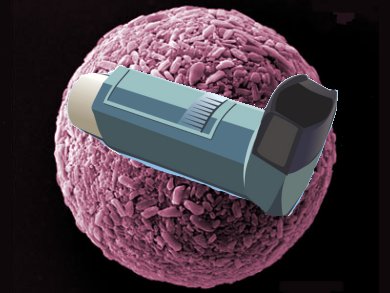Drugs, such as salbutamol, that are used for the relief of bronchospasm in asthma, are often delivered to the lungs by dry powder inhaler (DPI) formulations. The active drug is attached to large carrier particles by adhesion forces and is detached during inhalation by the patient’s inspiratory force. Lactose is the most common carrier particle. Its irregular shape creates areas of high adhesion forces that affect the detachment of the drug and lead to incomplete delivery to the lungs.
Nazrul Islam and co-workers, Institute of Health and Biomedical Innovation, Brisbane, Australia, have investigated the use of polycaprolactone (PCL) microspheres as carriers for dry powder inhalers. They coated the spheres with salbutamol sulfate (SS) and measured the adhesion forces by atomic force microscopy. The PCL spheres showed good surface coverage (pictured), but no SS release owing to the large adhesion forces associated with the presence of polyvinyl alcohol (PVA) stabilizer. Pre-coating the particles with magnesium stearate or leucine effectively covered the PVA layer on the PCL surface and halved the adhesive force.
This gave a significant improvement in drug detachment and could increase the amount of drug delivered to the lungs by asthma inhalers.
- Polycaprolactone microspheres as carriers for dry powder inhalers: Effect of surface coating on aerosolization of salbutamol sulfate
R. A. Tuli, T. R. Dargaville, G. A. George, N. Islam,
J. Pharm. Sci. 2011.
DOI: 10.1002/jps.22777



